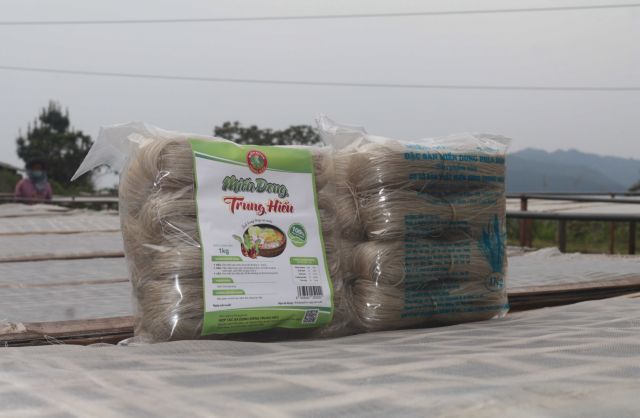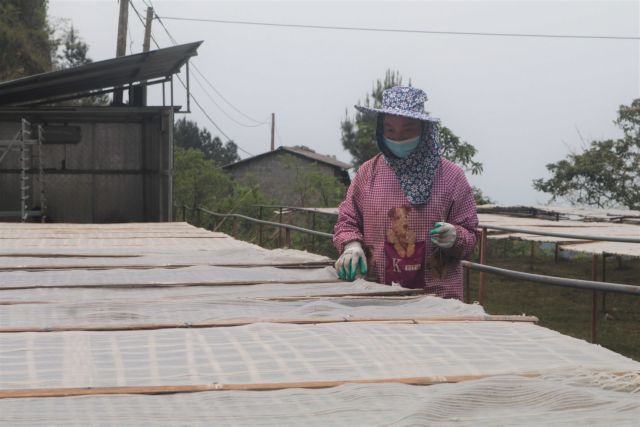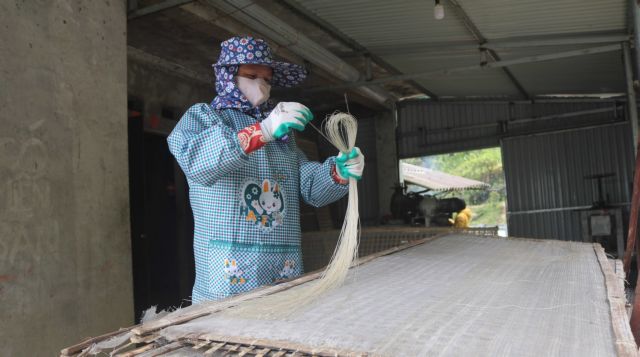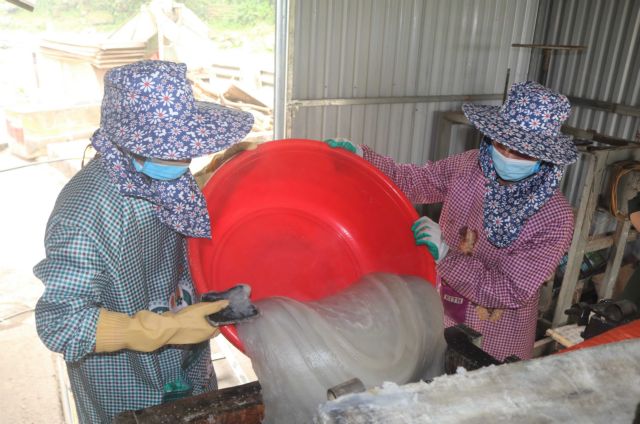 Life & Style
Life & Style

Phia Đén Hamlet in Thành Công Commune in the northern province of Cao Bằng is home to green fields of canna, whose roots are the main ingredient of glass noodle.

|
| Glass noodles is a specialty of Cao Bằng. VNA/VNS Photo Chu Hiệu |
Phia Đén Hamlet in Thành Công Commune in the northern province of Cao Bằng is home to green fields of canna, whose roots are the main ingredient of glass noodles.

|
| Raw glass noodles are dried under the sun. VNA/VNS Photo Chu Hiệu |
Canna is grown in Phia Đén Mountain, lying 1,000m above sea level, from January to February in the lunar calendar and harvested in October and November.

|
| Finished glass noodles are tied and packed for consumption.VNA/VNS Photo Chu Hiệu |
Phia Đén glass noodles are renowned nationwide thanks to their delicious taste and smooth texture, which are created using traditional methods and favourable weather conditions.

|
| Canna starch mixture has an ivory colour and smooth texture VNA/VNS Photo Chu Hiệu |
The glass noodles are white, the natural colours of the canna starch mixture without the use of any bleaching or colourants.
According to locals, the shimmering look of glass noodles depends on the purity of ingredients, mixing process and drying technique.
Glass noodle soup is often cooked with chicken, mushrooms and fresh onion, and has become a traditional dish with the distinctive taste of the region. A bowl of this healthy soup is often placed on the table to worship ancestors during special occasions like holidays, New Year, weddings or death anniversaries. It is also a popular dish for visitors to Phia Đén Mountain. VNS

|
| Canna, which is grown abundantly in Phia Đén Hamlet, is the main ingredient of glass noodles. VNA/VNS Photo Chu Hiệu |




